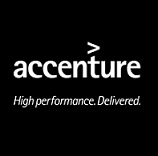Cypress Buying Broadcom IoT Wireless Business, WICED Brand
The $550 million deal comes as T.J. Rodgers, who founded the company 34 years ago, steps down as Cypress’ president and CEO.
Cypress Semiconductor has lost a CEO and gained an Internet of things business.On the same day that President and CEO T.J. Rodgers said he was stepping down after 34 years running the 7,000-person company he founded, Cypress officials announced they were buying the wireless Internet of things (IoT) business—from WiFi, Bluetooth and ZigBee products to the WICED brand—from Broadcom for $550 million.The acquisition, announced April 28, will strengthen Cypress’ position in a range of embedded systems markets, including automotive and industrial, as well as give it a stronger foothold in the consumer IoT market, according to officials. The deal will enable Cypress to build off what the company already is doing in the IoT space and give its more than 30,000 customers even more capabilities, according to Rodgers.”Cypress is a significant player in the IoT today because of our ultra-low-power PSoC programmable system-on-chip technology, but we’ve only been able to pair it with generic radios so far,” he said in a statement. “Now we have the highly regarded Broadcom IoT business—state-of-the-art WiFi, Bluetooth and Zigbee RF [radio frequency] technologies—that will transform us into a force in IoT and provide us with new market opportunities as well.”
The IoT is expected to grow rapidly over the next few years, and offers a broad array of opportunities for chip makers to supply silicon not only to the makers of the smart connected devices themselves, but also to the servers, networks, storage appliances, gateways and other devices that create the underlying infrastructure for the devices and the massive amounts of data they’re generating.
Intel CEO Brian Krzanich earlier this week reiterated his company’s focus on such markets as the cloud and IoT while reducing its reliance on PCs. Other chip makers, from Advanced Micro Devices and Nvidia to ARM and its various manufacturing partners—such as Qualcomm and Samsung—also are making strong moves in the space.Cisco and Intel officials are predicting that the number of connected devices worldwide will reach more than 50 billion by 2020. The forecasts from other vendors and analyst firms vary, but all are predicting sharp increases in the numbers. Analysts with IDC are forecasting that spending on the IoT will grow 17 percent a year, from $698.6 billion in 2015 to almost $1.3 trillion in 2019.Broadcom, which was bought by Avago Technologies for $37 billion, in 2013 launched its WICED (Wireless Internet Connectivity for Embedded Devices) portfolio for the IoT and wearable devices to give OEMs a platform on which to build their devices. The company also offered a WICED (pronounced “wicked”) software developer kit.According to Cypress officials, Broadcom’s 430-employee IoT business unit generated $189 million in revenue over the past 12 months. Stephen DiFranco, Broadcom’s IoT general manager, said he is pleased with the move to Cypress.”With our IoT connectivity products, Cypress will be able to provide the connectivity; the MCU [multicontroller], system-on-chip, module and memory technologies; and the mature developer ecosystem that IoT designers require, creating an end-to-end portfolio of embedded solutions and a single IoT design platform,” DiFranco said in a statement.According to the deal, Broadcom will continue building wireless connectivity products for devices and systems that aren’t related to the IoT, such as set-top boxes, smartphones and notebooks. The boards of directors for both companies have approved the deal, which Cypress officials expect to close in the third quarter.They’ll have to grow the business without Rodgers at the helm. The 68-year-old CEO said he is stepping down to help bring new people to the company, though he is remaining on the board and will help direct various projects.”I have always planned not to be spending most of my time in the last decade of my career immersed in the details of the operations, including those of the 7,000-person company that Cypress has become,” he said. “And, to be completely candid, the board and even the executive staff have urged me to bring new blood into operations.”The announcements came as Cypress officials released the company’s latest financial numbers. For the first quarter, Cypress saw revenue fall 6.8 percent as the company continues to absorb Spansion, the semiconductor vendor it bought last year for $4 billion. Cypress officials had said at the time of the acquisition that it expected to gain $180 million in synergies via the acquisition by the end of 2016. Through the latest quarter, the company achieved $150.4 million.
Source: eWeek













